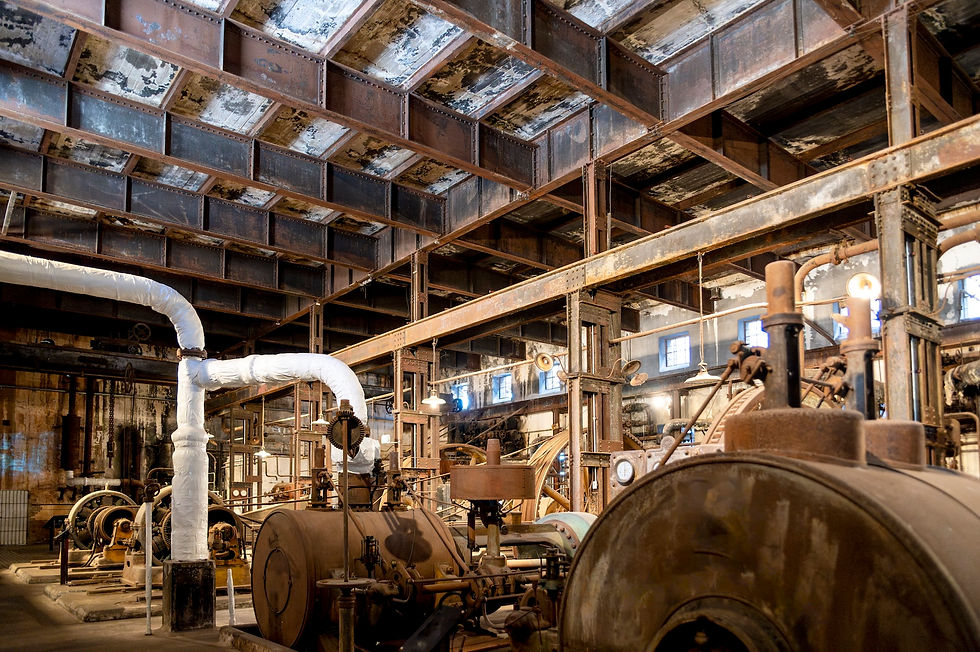How Blade Air's Pro Filter Technology Transforms Indoor Air Quality in Old Buildings
- Jennifer Crowley
- Jul 4, 2024
- 3 min read
Updated: Jul 8, 2024

Maintaining optimal indoor air quality (IAQ) in old buildings presents a unique set of challenges. Over time, these structures accumulate dust, allergens, and pollutants that can compromise the health and well-being of occupants. Outdated HVAC systems often struggle to keep up with modern air quality standards, leading to inefficient energy use and increased operational costs. This is where Blade Air's Pro Filter technology comes in, offering a cutting-edge solution to enhance IAQ and energy efficiency in older buildings.
What is Pro Filter Technology?

Blade Air’s Pro Filter technology is a revolutionary advancement in air purification. Unlike traditional filters, the Pro Filter uses unique electromagnetic filtration to capture and neutralize airborne particles. This technology works by charging particles in the air, making them easier to capture. The result is superior filtration efficiency, improving indoor air quality by as much as 2.25x and capturing particles 40x smaller than standard filters.
Key Features and Benefits
1. Energy Savings:
One of the standout features of the Pro Filter is its ability to reduce energy consumption. Traditional HVAC systems often require significant energy to push air through dense filters. However, the Pro Filter's low-pressure drop design allows air to flow more freely, reducing the load on HVAC systems. This results in up to 75% reduction in fan motor savings.
2. Operational Efficiency:
The Pro Filter technology not only enhances air quality but also improves the overall operational efficiency of HVAC systems. With its advanced design, the Pro Filter requires less frequent maintenance and replacement compared to traditional filters. This leads to lower operational costs and less downtime, with savings as high as 50%, ensuring that buildings can maintain a consistent level of air quality with minimal interruption.
3. Superior Filtration Capabilities:
The Pro Filter’s unique electromagnetic filtration process is designed to capture even the smallest airborne particles. Our Pro Filters capture ultrafine particles including viruses and bacteria, far exceeding the capabilities of traditional pleated filters and ensuring the air in your building is clean and safe. This is particularly beneficial for occupants with allergies or respiratory conditions, as it significantly reduces the presence of allergens and other irritants.
4. Logistics Efficiency:
Streamlined logistics opportunities can significantly reduce storage needs and delivery requirements, potentially resulting in up to 92% cost savings while also lowering emissions.
Case Study: Pro Filter Technology in Old Buildings

Case Study - The Toronto Historic Gooderham & Worts Distillery District
The Toronto Historic Gooderham & Worts Distillery District, a collection of 47, 19th-century buildings in downtown Toronto, faced significant challenges with poor air quality and high energy costs due to its outdated HVAC system.
After retrofitting with Blade Air's Pro Filter technology, the district saw a 75% reduction in supply fan motor consumption and a 2.25x increase in filter performance compared to their previous MERV 13 solution. This upgrade effectively captured and removed bacteria from the airstream.
In addition to the substantial energy savings and reduced maintenance costs, the retrofit significantly improved indoor air quality, enhancing the overall environment for occupants. The improved air quality has even contributed to better cognitive function among the residents, all achieved with no added retrofit costs. The transformation highlights the benefits of modernizing air filtration systems in historic buildings.
What Our Customers Are Saying
Jamie Goad, Co-Founder, Distillery District:
"We selected Blade Air after fairly exhaustive research...some of the things that were quite compelling were its ability to adapt to the kinds of HVAC systems we already have in place...distributed air handling, the ability to increase the level of filtration, the potential for energy saving, we wanted a product our own maintenance staff could replace...A number of important issues that were all satisfied by the Blade Air Product."
Russel Ross, Bayview Golf & Country Club:
"Wow, what a company. Great products, great prices and service. We put one [HEPA Air Purifier] into our club restaurant. What a difference! Air smells fresh and the members are really excited that the club is protecting them. Keep up the great work!”
Improving indoor air quality in old buildings doesn’t have to be a daunting task. Blade Air’s Pro Filter technology, particularly in old buildings, offers a proven solution that enhances IAQ, reduces energy consumption, and improves operational efficiency. If you're ready to transform your building’s air quality and enjoy the benefits of cutting-edge filtration technology, contact Blade Air today for a consultation and learn more about our retrofitting services.





















